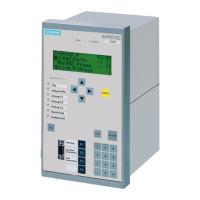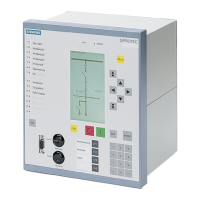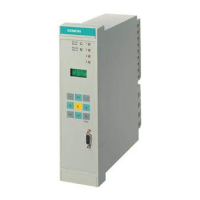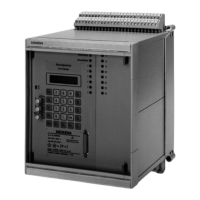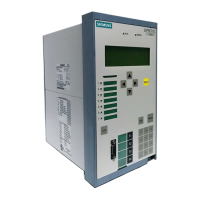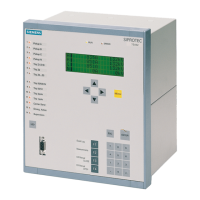2.10 Automatic Reclosure Function (optional)
131
7SD610 Manual
C53000-G1176-C145-4
Dead Line Check
(DLC)
If the voltage of a disconnected phase does not disappear following a trip, reclosure
can be prevented. A prerequisite for this function is that the voltage transformers are
connected on the line side of the circuit breaker. To select this function the dead line
check must be activated. The automatic reclosure function then checks the discon-
nected line for no-voltage: the line must have been without voltage for at least an ad-
equate measuring time during the dead time. If this was not the case, the reclosure is
blocked dynamically.
This no-voltage check on the line is of advantage if a small generator (e.g. wind gen-
erator) is connected along the line.
Adaptive Dead
Time (ADT)
In all the previous alternatives it was assumed that defined and equal dead times were
set at both line ends, if necessary for different fault types and/or reclose cycles.
It is also possible to set the dead times (if necessary different for various fault types
and/or reclose cycles) at one line end only and to configure the adaptive dead time at
the other end. This can be done provided that the voltage transformers are located on
the line side of the circuit breaker or that a means for transfer of a close command to
the remote line end exists.
Figure 2-45 shows an example with voltage measurement. It is assumed that the
device I is operating with defined dead times whereas the adaptive dead time is con-
figured at position II. It is important that the line is at least fed from busbar A, i.e. the
side with the defined dead times.
With the adaptive dead time, the automatic reclosure function at line end II decides
independently if and when reclosure is sensible and allowed and when it is not. The
criterion is the line voltage at end II, which was re-applied from end I following reclo-
sure there. Reclosure therefore takes place at end II as soon as it is apparent that
voltage has been re-applied to the line from end I. All phase-to-phase and phase-to-
earth voltages are monitored.
In the illustrated example, the lines are disconnected at positions I, and II. At I reclo-
sure takes place after the parameterized dead time.
If the fault has been cleared (successful reclosure), line A - B is re-connected to the
voltage at busbar A through position I. Device II detects this voltage and also recloses
after a short delay (to ensure a sufficient voltage measuring time). The fault is cleared.
If the fault has not been cleared after reclosure at I (unsuccessful reclosure), a switch
on to fault occurs at I, no healthy voltage appears at II. The device there detects this
and does not reclose.
In the case of multiple reclosure the sequence may be repeated several times follow-
ing an unsuccessful reclosure until one of the reclosures attempts is successful or a
final trip takes place.
Figure 2-45 Example of adaptive dead time (ADT)
A, B Busbars
I, II Relay locations
www . ElectricalPartManuals . com
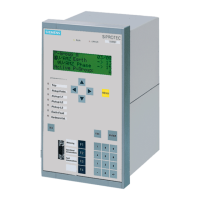
